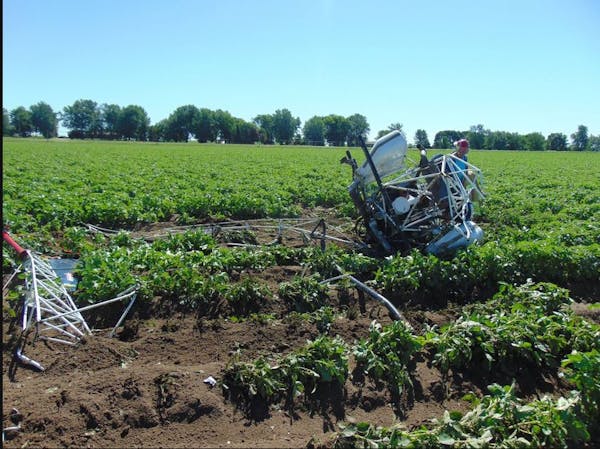Sheila Terryll and her husband, Troy Musel, have golfed at Hiawatha Golf Club for nearly two decades — as long as they have lived in the neighborhood near the Minneapolis course.
"It's just a great resource, and it's one of the reasons we like living in the neighborhood we do," Terryll said.
But their days playing close to home may come to an end. The Minneapolis Park and Recreation Board will vote in July on the course's future when it decides whether to reduce the groundwater pumping that keeps the golf course dry.
The Park Board has been pumping 262 million gallons of water annually from the ground to Lake Hiawatha to keep the golf course and nearby homes dry. Board members have to decide whether to keep pumping at that rate or reduce pumping to 94 million gallons a year — an amount that would keep homes dry but swamp the golf course.
The state Department of Natural Resources (DNR), which has jurisdiction over groundwater pumping, has said it favors the reduced pumping option, Assistant Park Superintendent Michael Schroeder said.
"The DNR has significant say in what happens here," Schroeder said. "If they say, 'We will not allow you to pump at 262 million gallons,' we can't pump 262 million gallons."
The Park Board is working closely with the Minnehaha Creek Watershed District and the city to explore both options before making a final decision.
But many golfers are dismayed at the idea of the course closing.
At least 10 golf clubs have closed across the metro area in the past five years alone, but the number of golfers holds steady, said Tom Ryan, executive director of the Minnesota Golf Association. Challenges exist with all recreational sports, not just in golf, he said.
"It would be too bad if a course within the city limits like that went away," Ryan said.
Some people have suggested the Park Board pump enough to keep a nine-hole course open at Hiawatha Golf Club. Schroeder said that is not financially feasible, given the cost of upkeep.
The Park Board and city officials will meet with golfers and area residents Wednesday night at Nokomis Community Center to discuss the costs and benefits of different options.
A soggy challenge
Problems arose at Hiawatha in 2014 when the course flooded after torrential rains. That led park officials to discover they were pumping more groundwater than they realized — and far more than the 36.5 million annual gallons allowed by their permit — to keep the course dry.
Ever since, the fate of the 18-hole course has been a point of debate. While golfers have said they want the course to stay open, other residents have said they want to see other recreational uses of the land, including a "food forest" with fruit and nut trees.
Park Commissioner Steffanie Musich, who represents the area that includes the Hiawatha Golf Club, said the board will vote on an option that is supported by the DNR and that would reduce pollutants in the water in Lake Hiawatha.
The Park Board has been working to come into compliance with the state since it found out too much water was being pumped from the ground. And Musich noted that in another instance, the Park Board sued a developer for pumping water into Lake Calhoun without a permit.
"Based on past comments we have made around this particular issue in general meetings, and then our previous actions in that particular case, I know my feeling is that [reduced pumping] is probably where this will go," Musich said. "Certainly, the environmental benefits of a reduced pumping scenario are really significant and certainly going to play a big role in my decisionmaking."
If the Park Board decides to reduce groundwater pumping, the golf course won't close immediately. The Park Board would launch a planning process that could take two years and involve multiple community meetings.
Faiza Mahamud • 612-673-4203
Robbinsdale shelter-in-place alert accidentally sent countywide
Developer of St. Paul's Keg & Case food hall declares bankruptcy

Wildlife agency: Sturgeon won't go on endangered species list

Minnesotans interviewed to serve on Feeding Our Future trial

